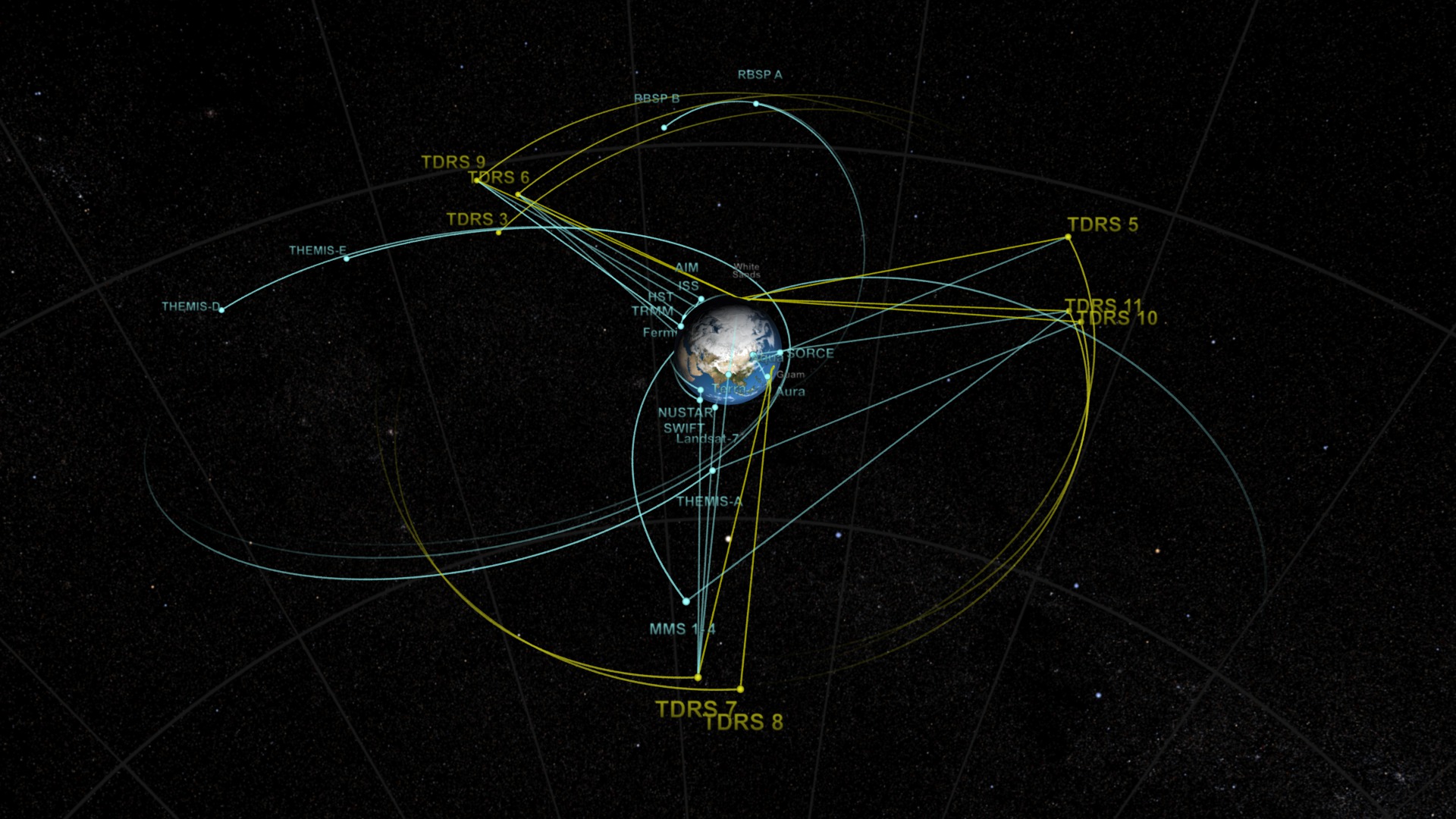TDRS: The Network That Enables Exploration
NASA is preparing to launch the second, in a series of three, third generation advanced Tracking and Data Relay Satellites, known as TDRS. This latest addition to the fleet of eight, TDRS-L, will augment a space communications network that provides the critical path for high data-rate communication to the International Space Station, Hubble Space Telescope, human occupied spacecraft and a host of other spacecraft.
In 1983, NASA launched the first of a series of new communication and navigation satellites that would rely less on international ground stations and provide continuous coverage.
For complete transcript, click here.
This video is also available on our YouTube channel.
With its ever-expanding orbiting fleet of satellites and manned space flights NASA had to increase the coverage and develop an improved way to track and communicate.
The International Space Station (ISS) routes voice and video communications along with data through the TDRS fleet.
The Hubble Space Telescope also utilizes the full capabilities of TDRS. TDRS supports the Hubble’s real-time interactions with the ground systems allowing observers to make small adjustments to its observatory system.
TDRS provides the Earth Observing System of satellites, such as the Aura spacecraft, with low latency data relay and navigation data.
The TDRS network sends all of these data streams and voice communications to either the White Sands Complex in New Mexico or the Guam Remote Ground Terminal. Guam then transmits the data it receives to White Sands.
The White Sands Complex then relays it to the end user at their mission’s operations centers.
As long as there’s space exploration, TDRS will be working side by side with spacecraft and end-user, providing continuous connectivity for navigation, data and voice communications.
TDRS arrives at Kennedy Space Center (KSC) and is placed in a cleanroom before it is loaded on to its rocket.
TDRS-L Launch
Credits
Please give credit for this item to:
NASA's Goddard Space Flight Center
-
Animators
- Greg Shirah (NASA/GSFC)
- Walt Feimer (HTSI)
- Michael Lentz (USRA)
- Chris Meaney (HTSI)
- Ernie Wright (USRA)
-
Video editor
- Stuart A. Snodgrass (HTSI)
-
Narrator
-
Producer
- Stuart A. Snodgrass (HTSI)
-
Project support
- Aaron E. Lepsch (ADNET Systems, Inc.)
- Cheryl Gramling (NASA/GSFC)
-
Writers
Release date
This page was originally published on Tuesday, January 21, 2014.
This page was last updated on Wednesday, May 3, 2023 at 1:51 PM EDT.
Missions
This page is related to the following missions:Series
This page can be found in the following series:Tapes
The media on this page originally appeared on the following tapes:-
The Network That Enables Exploration, TDRS
(ID: 2014005)
Thursday, January 23, 2014 at 5:00AM
Produced by - Werner Benger (NASA)
